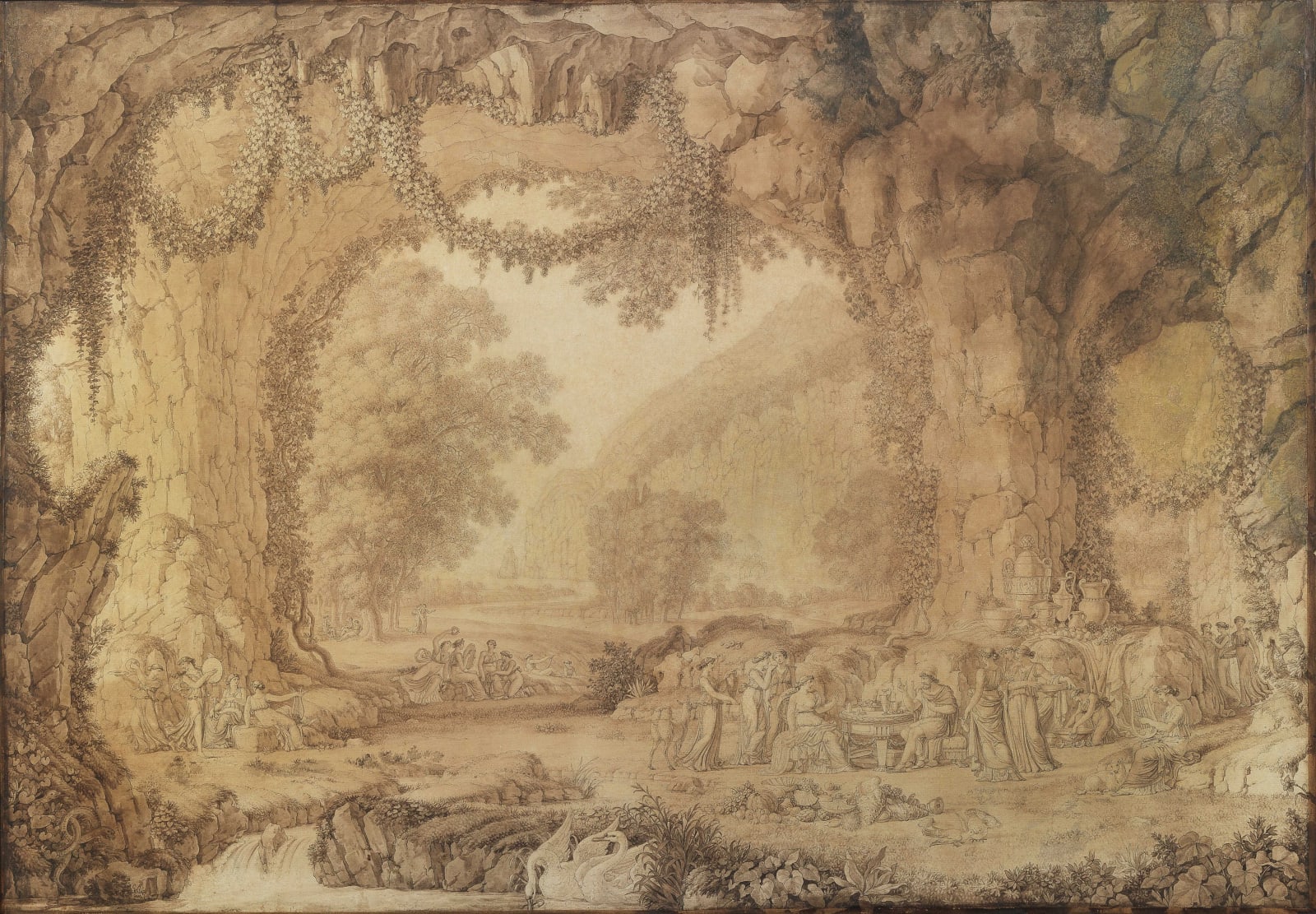Christoph Heinrich KNIEP
Provenance
Rome, private collection
Literature
G. Striehl, Der Zeichner Christoph Heinrich Kniep (1755-1825). Landschaftsauffassung und Antikenrezeption. Hildesheim, Zurich, New York, 1998.
Our unpublished watercolor depicts the Homeric episode of Ulysses’ last lunch in Ogygia (The Odyssey, V, vv. 247-255), when Calypso – despite being in love with Ulysses – agrees to help the hero continue his journey towards Ithaca upon a raft. This is a companion piece to another of Kniep’s watercolors, signed and dated 1797, also belonging to the Galleria Paolo Antonacci, which depicts Ulysses’ departure from Circe’s island.
Calypso, daughter of Atlas, lived on the island of Ogygia in a cave that faced lush gardens and a sacred grove. She was described as a beautiful and immortal woman, who kept Ulysses on her island for seven years until Zeus, through Hermes, ordered her to release him.
Other two of his watercolors, dated 1805, that resemble our two 18th century Homeric scenes, can be found at the Staatliche Museen in Berlin. One of them depicts the same subject of our watercolor and had been wrongly linked to the other Homeric episode of Ulysses’ lunch with Nausicaa.
C. H. Kniep, Ulyses and Calypso (1805), Berlin, Kupferstichkabinett, Staatliche Museen
Recently, in occasion of the edition of the catalogue of Kniep’s works edited by Georg Striehl, the aforementioned early 19th century watercolor was re-interpreted to Ulysses’ lunch with Calypso, and the naturalistic background was compared to the karst caves of the Bonea Valley in Campania, Italy.
Other than inspiring himself from the direct observation of the nature of Campania, Kniep also faithfully abides to the Homeric description of this paradisiac place:
Thick, luxuriant woods grew round the cave, alders and black poplars, pungent cypress too, and there birds roosted, folding their long wings, owls and hawks and the spread-beaked ravens of the sea, black skimmers who make their living off the waves. And round the mouth of the cavern trailed a vine laden with clusters, bursting with ripe grapes. Four springs in a row, bubbling clear and cold, running side-by-side, took channels left and right. Soft meadows spreading round were starred with violets, lush with beds of parsley. (Odyssey, V, vv. 83-99)
Kniep inserted a snake on the lower left margin of our watercolor, which is absent in the 1805 version exposed in Berlin.
In both versions, it is possible to detect a couple of swans on the foreground, symbol of conjugal love and purity. One of them holds a snake in his beak – a symbol of Ulysses’ patience and faithfulness – as he refused the gift of immortality from Calypso to return to his beloved Penelope.
JOIN OUR MAILING LIST
Subscribe to our mailing list in order to receive news on new acquisitions, exhibitions, special previews and more!
* denotes required fields
We will process the personal data you have supplied to communicate with you in accordance with our Privacy Policy. You can unsubscribe or change your preferences at any time by clicking the link in our emails.
